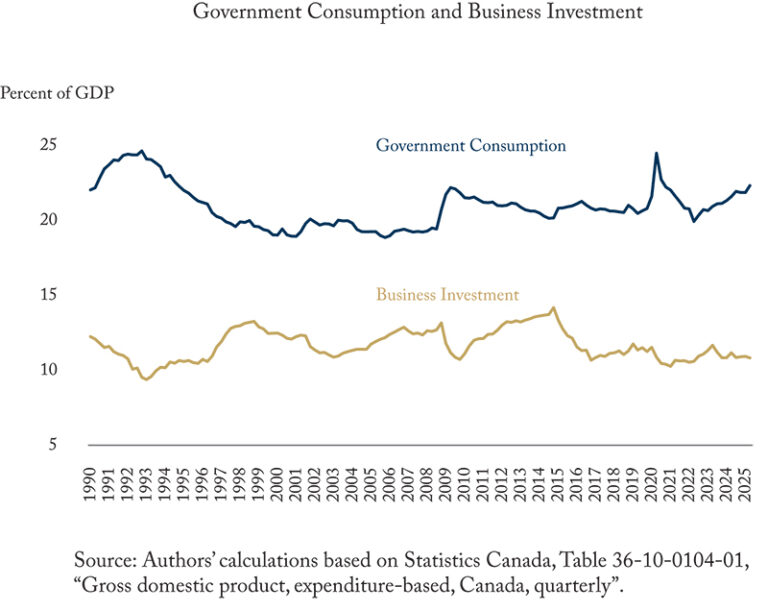
Like the 2008/09 financial crisis and recession a decade earlier, the COVID pandemic triggered a build-up of debt by Canadian households, nonfinancial corporations, the federal government and other (provincial and local) governments. After 2008/09, the debts of households, nonfinancial corporations and other governments tended to rise relative to GDP, while fiscal consolidation lowered the federal government’s debt-to-GDP ratio.
After COVID, by contrast, the debt ratios of households, nonfinancial corporations and other governments have fallen below their pre-COVID levels, while the debt ratio of the federal government remains higher.
Do the improved balance sheets of other sectors since COVID reflect, at least in part, a transfer of financial risk to the federal government? Canada might be readier for the fiscal demands of the next crisis if the federal government lowered its debt ratio and reduced the dependence of other sectors on federal support in more normal times.
Read the Institute’s Shadow Budget to learn how the federal government can achieve budget surpluses and lower its debt burden.


